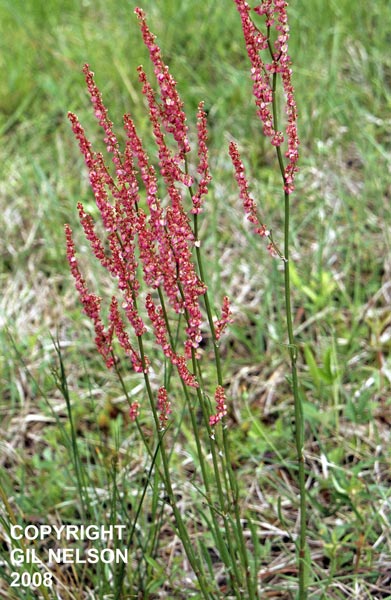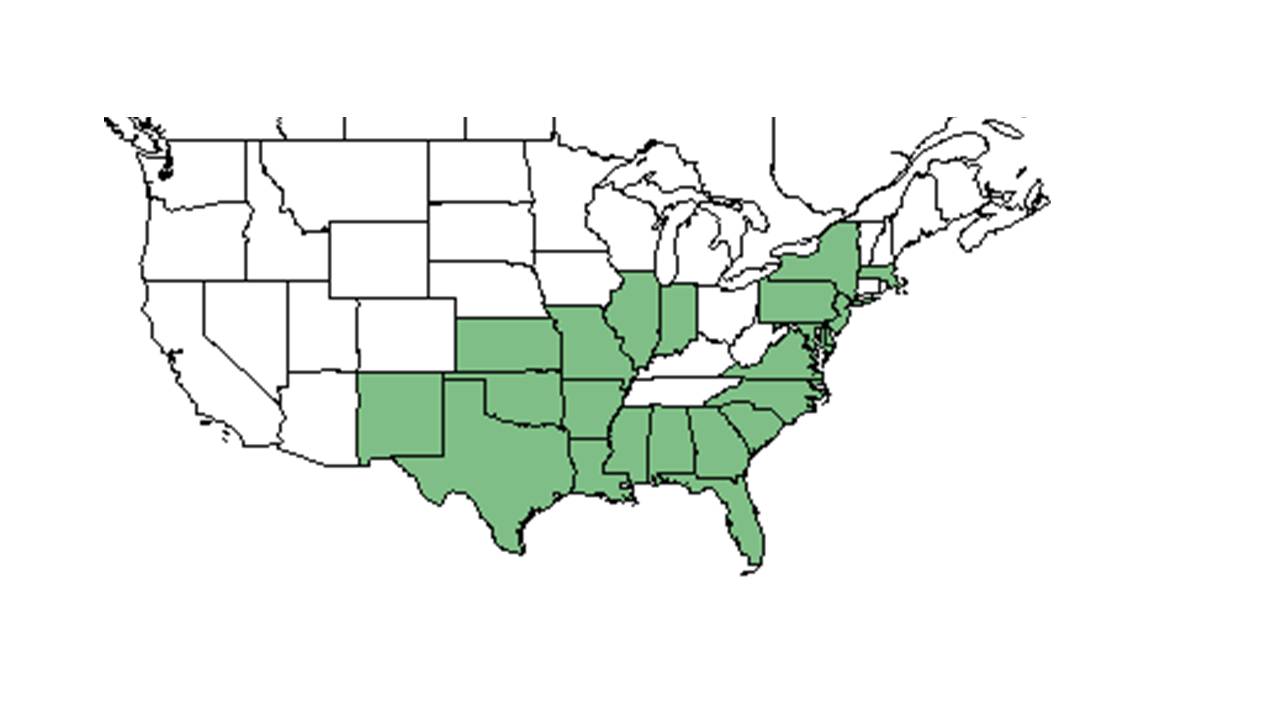Difference between revisions of "Rumex hastatulus"
KatieMccoy (talk | contribs) |
KatieMccoy (talk | contribs) |
||
| Line 27: | Line 27: | ||
==Ecology== | ==Ecology== | ||
===Habitat=== <!--Natural communities, human disturbed habitats, topography, hydrology, soils, light, fire regime requirements for removal of competition, etc.--> | ===Habitat=== <!--Natural communities, human disturbed habitats, topography, hydrology, soils, light, fire regime requirements for removal of competition, etc.--> | ||
| − | ''R. hastatulus'' can be found in shortleaf pine-oak forests, back sides of foredunes, scrub edges, under magnolia islands in sand dune communities, sandy areas of upland mixed forests, mesic woodlands, rocky open woods, thickets, granite outcrops, upland sandhill pond basins (FSU Herbarium). It can also occur along roadsides, roadside depressions, recently tilled roadsides, lawns, open fields, recently cleared areas, swampy woodland clearings, cleared creek bottoms, sandy fallow fields, old biocontrol plots, and areas of frequently disturbed soils (FSU Herbarium). Soils include | + | ''R. hastatulus'' can be found in shortleaf pine-oak forests, back sides of foredunes, scrub edges, under magnolia islands in sand dune communities, sandy areas of upland mixed forests, mesic woodlands, rocky open woods, thickets, granite outcrops, upland sandhill pond basins (FSU Herbarium). It can also occur along roadsides, roadside depressions, recently tilled roadsides, lawns, open fields, recently cleared areas, swampy woodland clearings, cleared creek bottoms, sandy fallow fields, old biocontrol plots, and areas of frequently disturbed soils (FSU Herbarium). Soils include sand, sandy loam, and loamy sand (FSU Herbarium). |
Associated species include ''Liatris, Panicum, Leptoloma cognatum, Trifolium, Vicia, Linaria, Cerastium'' and ''Viola'' (FSU Herbarium). | Associated species include ''Liatris, Panicum, Leptoloma cognatum, Trifolium, Vicia, Linaria, Cerastium'' and ''Viola'' (FSU Herbarium). | ||
Revision as of 18:16, 6 October 2015
| Rumex hastatulus | |
|---|---|

| |
| Photo taken by Gil Nelson | |
| Scientific classification | |
| Kingdom: | Plantae |
| Division: | Magnoliophyta – Flowering plants |
| Class: | Magnoliopsida – Dicotyledons |
| Order: | Polygonales |
| Family: | Polygonaceae |
| Genus: | Rumex |
| Species: | R. hastatulus |
| Binomial name | |
| Rumex hastatulus Baldw. | |

| |
| Natural range of Rumex hastatulus from USDA NRCS Plants Database. | |
Common name: heartwing sorrel
Contents
Taxonomic notes
Description
A description of Rumex hastatulus is provided in The Flora of North America.
Distribution
Ecology
Habitat
R. hastatulus can be found in shortleaf pine-oak forests, back sides of foredunes, scrub edges, under magnolia islands in sand dune communities, sandy areas of upland mixed forests, mesic woodlands, rocky open woods, thickets, granite outcrops, upland sandhill pond basins (FSU Herbarium). It can also occur along roadsides, roadside depressions, recently tilled roadsides, lawns, open fields, recently cleared areas, swampy woodland clearings, cleared creek bottoms, sandy fallow fields, old biocontrol plots, and areas of frequently disturbed soils (FSU Herbarium). Soils include sand, sandy loam, and loamy sand (FSU Herbarium).
Associated species include Liatris, Panicum, Leptoloma cognatum, Trifolium, Vicia, Linaria, Cerastium and Viola (FSU Herbarium).